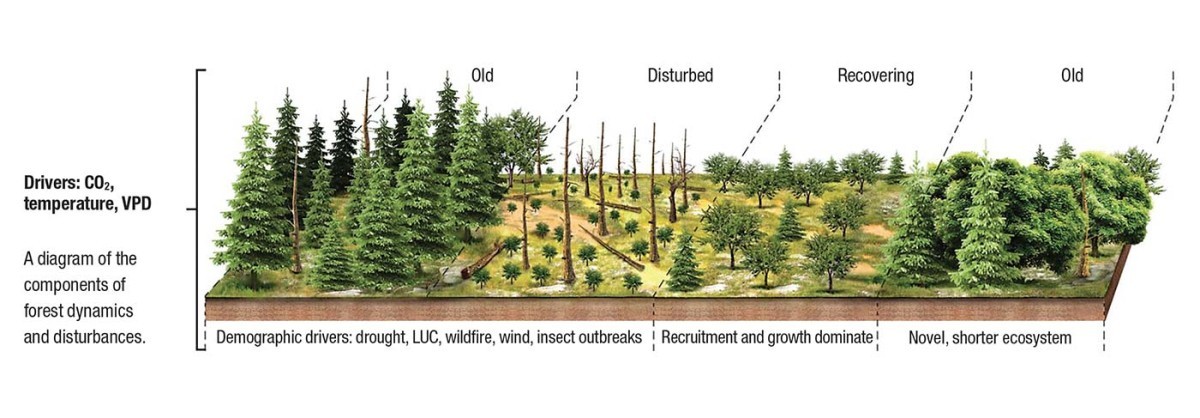
The changing climate is transforming forests around the world, and a new study has found that these changes are resulting in forests of shorter and younger trees. A review of 160 previous studies on the subject and an analysis of existing data back to 1900 led by earth scientist Nate McDowell at the Department of Energy’s Pacific Northwest National Laboratory found that rising temperatures and carbon dioxide levels are stressing trees and increasing the frequency and severity of wildfires, drought, windstorms, and outbreaks of pest insects. Combined with forest harvest, the result is that the world’s forests are decreasing in age and stature.
“The smoking gun that was pervasive across the study is temperature rise,” McDowell said. “That makes wildfires worse and more frequent; it makes insect outbreaks more likely; it stresses out trees so droughts that were tolerable are now lethal. Everything comes back to managing our global fossil-energy budget.”
At the current rate of temperature rise, he thinks the trend is likely to continue. “A future planet with fewer large, old forests will be very different than what we have grown accustomed to. Older forests often host much higher biodiversity than young forests, and they store more carbon than young forests.”
The researchers identified several key mechanisms that are driving the changes to forests. Increased temperature limits photosynthesis, leading to lower growth rates, higher mortality and reduced regeneration, which results in shorter trees. Increased atmospheric carbon dioxide can increase tree growth in younger forests with access to abundant nutrients and water, but most forests around the world have limited nutrients and water, reducing the benefits of carbon dioxide. Drought not only kills trees directly, but it also makes trees more susceptible to insect damage and pathogens.
In addition, the study noted that plant growth following forest fires is reduced when temperatures are elevated, and deforestation due to biotic disturbances such as insects, fungi, and choking vines is on the increase. Logging of trees worldwide also reduces the age of forests, and when forests are regrown, the trees are often smaller.
According to McDowell, forests in the Northeast have largely been spared from widespread mortalities, but he isn’t optimistic it will remain so for long. He points to a major die-off of trees in central Europe in 2018 and 2019 where conditions are relatively wet and cool – similar to those in New England.
“Most places on Earth are showing an increase in mortality rate, so it would be throwing the dice with a bad hand if you were to bet that New England was never going to have that problem,” he said. “Temperature is going up in New England just like everywhere else, and droughts are going to happen eventually. You’ll get a drought at some point, and it’s going to be a warm drought relative to what those trees are used to. I’m not expecting New England to be bare of trees in 100 years, but it will certainly look different.”

